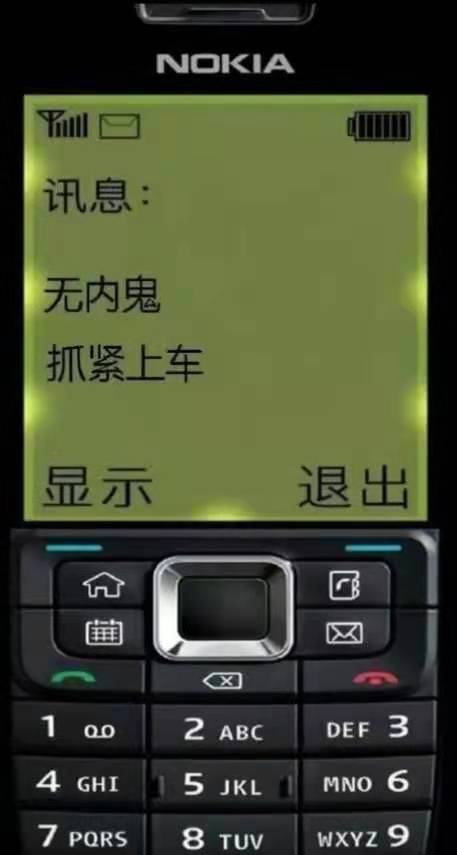uni-app如何实现USB插入后自动弹出对应软件
这里给大家分享我在网上总结出来的一些知识,希望对大家有所帮助
最近碰到了一个奇葩需求,要用uni-app来实现usb接入设备的时候,让软件自动弹出来,这里给出我制作的过程和参考的各种思路,希望对大家有所帮助
一.插入usb自动弹出app
因为uni-app代码里并不支持这个行为,我们需要用Android代码来制作对应功能
具体本地打包步骤可以看我之前的文章 点击前往
1.在<activity ...>添加
1 2 3 4 5 | <intent-filter> <action android:name="android.hardware.usb.action.USB_DEVICE_ATTACHED" /> </intent-filter> <meta-data android:name="android.hardware.usb.action.USB_DEVICE_ATTACHED" android:resource="@xml/device_filter" /> |
在res/xml文件夹下新建device_filter.xml
1 2 3 4 | <resources> <usb-device vendor-id="3544" product-id="8199" /> <usb-device vendor-id="5251" product-id="4608" /> </resources> |
其中vendor-id和product-id为插入USB设备的生产厂家号和产品号,但插入(attached)上面列出的设备之一时就会弹出选择打开应用程序的对话框。注:上面的id为10进制的,而通过电脑上查看的id为16进制的。
二.Android检测外接USB设备的几种方法
1. 使用BroadcastReceiver监听系统广播
1 2 3 4 5 6 7 8 9 10 11 12 13 14 15 16 17 18 19 20 | private void detectUsbWithBroadcast() { Log.d(TAG, "listenUsb: register"); IntentFilter filter = new IntentFilter(); filter.addAction(UsbManager.ACTION_USB_DEVICE_ATTACHED); filter.addAction(UsbManager.ACTION_USB_DEVICE_DETACHED); filter.addAction(UsbManager.ACTION_USB_ACCESSORY_ATTACHED); filter.addAction(UsbManager.ACTION_USB_ACCESSORY_DETACHED); filter.addAction("android.hardware.usb.action.USB_STATE"); registerReceiver(mUsbStateChangeReceiver, filter); Log.d(TAG, "listenUsb: registered");}private BroadcastReceiver mUsbStateChangeReceiver = new BroadcastReceiver() { @Override public void onReceive(Context context, Intent intent) { Log.d(TAG, "onReceive: " + intent.getAction()); }}; |
2. 使用InputManager检测输入设备
1 2 3 4 5 6 7 8 9 | private void detectUsbDeviceWithInputManager() { InputManager im = (InputManager) getSystemService(INPUT_SERVICE); int[] devices = im.getInputDeviceIds(); for (int id : devices) { InputDevice device = im.getInputDevice(id);// Log.d(TAG, "detectUsbDeviceWithInputManager: " + device.getName()); //do something } } |
3. 使用Configuration
1 2 3 4 5 6 7 8 | private void detectUsbKeyboardWithConfig() { Configuration config = getResources().getConfiguration(); if (config.keyboard == Configuration.KEYBOARD_NOKEYS) { Log.i(TAG, "detectUsbKeyboardWithConfig: config: no keyboard"); } else { Log.i(TAG, "detectUsbKeyboardWithConfig: config: has keyboard: " + config.keyboard); }} |
4. 使用UsbManager
1 2 3 4 5 6 7 | private void detectUsbDeviceWithUsbManager() { HashMap<String, UsbDevice> deviceHashMap = ((UsbManager) getSystemService(USB_SERVICE)).getDeviceList(); for (Map.Entry entry : deviceHashMap.entrySet()) { Log.d(TAG, "detectUsbDeviceWithUsbManager: " + entry.getKey() + ", " + entry.getValue()); }} |
5. 调用Linux命令
1 2 3 4 5 6 7 8 9 10 11 12 13 14 15 16 17 | private void detectInputDeviceWithShell() { try { //获得外接USB输入设备的信息 Process p = Runtime.getRuntime().exec("cat /proc/bus/input/devices"); BufferedReader in = new BufferedReader(new InputStreamReader(p.getInputStream())); String line = null; while ((line = in.readLine()) != null) { String deviceInfo = line.trim(); //对获取的每行的设备信息进行过滤,获得自己想要的。// if (deviceInfo.contains("Name=")) Log.d(TAG, "detectInputDeviceWithShell: " + deviceInfo); } Log.d(TAG, "-----------------------"); } catch (Exception e) { e.printStackTrace(); } } |
三.Android :USB设备信息获取
lsusb:查看系统当前连接的所有USB设备

cat /sys/kernel/debug/usb/devices : 每个USB设备及其配置描述符
1 2 3 4 5 6 7 8 9 10 11 12 13 14 15 16 17 18 19 20 21 22 23 24 25 26 27 28 29 30 31 32 33 34 35 36 | T: Bus=01 Lev=00 Prnt=00 Port=00 Cnt=00 Dev#= 1 Spd=480 MxCh= 1 //第一层 EHCI 控制器B: Alloc= 0/800 us ( 0%), #Int= 0, #Iso= 0D: Ver= 2.00 Cls=09(hub ) Sub=00 Prot=01 MxPS=64 #Cfgs= 1P: Vendor=1d6b ProdID=0002 Rev= 5.04S: Manufacturer=Linux 5.4.86-android11-2-g9b3456a83314-dirty xhci-hcdS: Product=xHCI Host ControllerS: SerialNumber=xhci-hcd.0.autoC:* #Ifs= 1 Cfg#= 1 Atr=e0 MxPwr= 0mAI:* If#= 0 Alt= 0 #EPs= 1 Cls=09(hub ) Sub=00 Prot=00 Driver=hubE: Ad=81(I) Atr=03(Int.) MxPS= 4 Ivl=256msT: Bus=01 Lev=01 Prnt=01 Port=00 Cnt=01 Dev#= 2 Spd=480 MxCh= 4 //第二层 HUB D: Ver= 2.10 Cls=09(hub ) Sub=00 Prot=02 MxPS=64 #Cfgs= 1P: Vendor=2109 ProdID=2817 Rev=90.13S: Manufacturer=VIA Labs, Inc.S: Product=USB2.0 HubS: SerialNumber=000000000C:* #Ifs= 1 Cfg#= 1 Atr=e0 MxPwr= 0mAI: If#= 0 Alt= 0 #EPs= 1 Cls=09(hub ) Sub=00 Prot=01 Driver=hubE: Ad=81(I) Atr=03(Int.) MxPS= 1 Ivl=256msI:* If#= 0 Alt= 1 #EPs= 1 Cls=09(hub ) Sub=00 Prot=02 Driver=hubE: Ad=81(I) Atr=03(Int.) MxPS= 1 Ivl=256msT: Bus=01 Lev=02 Prnt=02 Port=00 Cnt=01 Dev#= 11 Spd=480 MxCh= 0 //第三层 连接到HUB上的设备D: Ver= 2.10 Cls=00(>ifc ) Sub=00 Prot=00 MxPS=64 #Cfgs= 1P: Vendor=0bda ProdID=b812 Rev= 2.10S: Manufacturer=RealtekS: Product=802.11ac NICS: SerialNumber=123456C:* #Ifs= 1 Cfg#= 1 Atr=80 MxPwr=500mAI:* If#= 0 Alt= 0 #EPs= 5 Cls=ff(vend.) Sub=ff Prot=ff Driver=(none)E: Ad=84(I) Atr=02(Bulk) MxPS= 512 Ivl=0msE: Ad=05(O) Atr=02(Bulk) MxPS= 512 Ivl=0msE: Ad=06(O) Atr=02(Bulk) MxPS= 512 Ivl=0msE: Ad=87(I) Atr=03(Int.) MxPS= 64 Ivl=500usE: Ad=08(O) Atr=02(Bulk) MxPS= 512 Ivl=0ms |
cat /proc/bus/input/devices :查看连接的输入设备信息

cat sys/bus/usb/devices/2-1.1/ :查看对应USB设备的详细信息,例如 2-1.1:1.0 命名规则是:roothub-port:configuration.interface.)

cat /sys/bus/usb/devices/2-1.1\:1.0/bInterfaceClass :查看当前设备所支持的特性,例如: 01 表示支持audio

只查看连接设备的端口信息:
1 2 3 | # ls /sys/bus/usb/drivers/usb/1-1 1-1.2 1-1.2.3.1 1-1.3.1 2-1 2-1.2.3 uevent usb11-1.1 1-1.2.3 1-1.3 1-1.3.3 2-1.2 bind unbind usb2 |
查看主次设备号:
1 2 3 4 5 6 7 8 9 10 | # cat /sys/bus/usb/devices/1-1.4/ueventMAJOR=189MINOR=9DEVNAME=bus/usb/001/010DEVTYPE=usb_deviceDRIVER=usbPRODUCT=bda/b812/210TYPE=0/0/0BUSNUM=001DEVNUM=010 |





【推荐】编程新体验,更懂你的AI,立即体验豆包MarsCode编程助手
【推荐】凌霞软件回馈社区,博客园 & 1Panel & Halo 联合会员上线
【推荐】抖音旗下AI助手豆包,你的智能百科全书,全免费不限次数
【推荐】博客园社区专享云产品让利特惠,阿里云新客6.5折上折
【推荐】轻量又高性能的 SSH 工具 IShell:AI 加持,快人一步
· 实操Deepseek接入个人知识库
· CSnakes vs Python.NET:高效嵌入与灵活互通的跨语言方案对比
· 【.NET】调用本地 Deepseek 模型
· Plotly.NET 一个为 .NET 打造的强大开源交互式图表库
· 上周热点回顾(2.17-2.23)